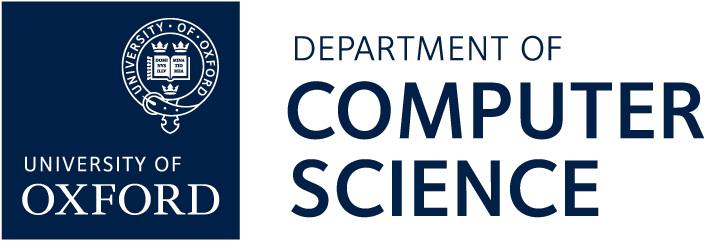FHIES 2013 — Keynote Speakers

Bill Thies
Bill Thies is a researcher in the Technologies for Emerging Markets Group at Microsoft Research India. His research focuses on building appropriate information and communication technologies that contribute to the socio-economic development of low-income communities, with a focus on healthcare and education. He has also worked on the description and automation of biology protocols on platforms such as microfluidic chips. Bill received all of his degrees from the Massachusetts Institute of Technology, where he completed a Ph.D. in computer science in 2009. His thesis was a recipient of the ACM SIGPLAN Doctoral Dissertation Award.
Deploying mHealth Technologies in India: Successes, Failures, and Lessons LearnedThe global spread of mobile phones has ignited broad aspirations regarding the potential role of technology in improving health in impoverished communities. However, researchers and policymakers often meet with surprises when deploying new technologies in resource-poor environments. In this talk, I will describe lessons learned in deploying technologies for health and human development with colleagues in India over the past five years. I will structure the talk around three case studies: a voice portal for citizen reporting, a biometric system for tracking tuberculosis medications, and a mobile data collection tool for childhood malnutrition. I will highlight both successes and failures, and synthesize our experiences into a set of recommendations for future mHealth interventions.
Joe Cafazzo
Dr. Joseph Cafazzo is Lead for the Centre for Global eHealth Innovation, a state-of-the-art research facility devoted to the evaluation and design of healthcare technology hosting seventy researchers and staff, and founded Healthcare Human Factors at the University Health Network—the largest group of its kind devoted to the application of human factors engineering to problems of healthcare delivery and patient safety.
Dr. Cafazzo teaches and conducts research at the Institute of Health Policy, Management and Evaluation, and the Institute of Biomaterials and Biomedical Engineering, Faculty of Medicine, University of Toronto. In 2010 he was the recipient of the Career Scientist award by the Ontario Ministry of Health and Long Term Care. In 2011, he was named Clinical Lead, Design and Engineering, of the newly established Techna Institute at the University Health Network.
Patient, Heal Thyself: How Technology Can Facilitate Patient Self-CarePatients have the ability to demonstrate astounding self-care behaviour. Who are these patients? What are their identifiable attributes? How can technology elicit this behaviour in others for their benefit and the benefit of our strained healthcare delivery system? We know that patients actively seek information for diagnoses, treatment and managing their own care. Our research looks at how access to information and the use of technology affect patient behaviour in managing their condition. The aim is to understand how the healthcare system and its providers can support and accommodate these patients for improved, cost-effective, health outcomes.
Jane Liu
Jane W.S. Liu is a Distinguished Visiting Fellow of Institute of Information Science and Research Center for Information Technology Innovations of Academia Sinica, Taiwan. Before joining Academia Sinica in 2004, she was a software architect in Microsoft Corporation from 2000 to 2004 and a faculty member of Computer Science Department at the University of Illinois at Urbana-Champaign from 1972 to 2000. Her research interests are in the areas of real-time and embedded systems. In addition to journal and conference publications, she has also published two text books, one on real-time systems and the other on signals and systems. Her recent research focuses on technologies for building user-centric automation and assistive devices and services and for enhancing disaster preparedness and early response capabilities of disaster management ICT infrastructures. She received the Achievement and Leadership Award of IEEE Computer Society, Technical Committee on Real-Time Systems in 2005; Information Science Honorary Medal of Taiwan Institute of Information and Computing Machinery in 2008 and Linux Golden Penguin Award for special contributions of Taiwan Linux Consortium in 2009. She is a fellow of IEEE.
Intelligent Tools for Minimizing Medication Dispensing and Administration ErrorsAdvances in medical and pharmaceutical technologies over the years have led to more and more drugs that can cure or control previously fatal diseases and help people live actively for decades longer. The benefits of the drugs would be even more wondrous if it were not for the high rate of preventable medication errors that lead to thousands of serious adverse drug events and billions of dollars in hospital cost each year in US alone. These alarming statistics have motivated numerous efforts in research, development and deployment of systems and tools for prevention of medication errors. Today, computerized physician order entry (CPOE) systems are now widely used in hospitals and clinics. Together with clinical decision support and electronic patient health and medication record systems, CPOE systems can help prevent up to 40% of all medication errors. Next to prescription errors, administration errors (i.e., errors due to failures to compliant to medication directions) are the most prevalent: They contribute 25–40% of all preventable errors. This talk will first present an overview of smart medication dispensing and administration devices and software tools designed to minimize dispensing and administration errors. Some of them are for users who take medications on long term basis without close professional supervision; others are for pharmacy and nursing staff in hospitals, long term care, and assisted living facilities. The talk will then discuss the challenges in making these tools configurable, customizable, easy to use and effective for diverse users and care-providing institutions, as well as opportunities and challenges in their wide deployment and use.

